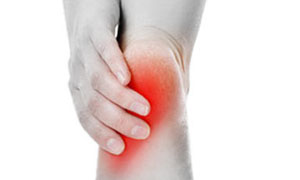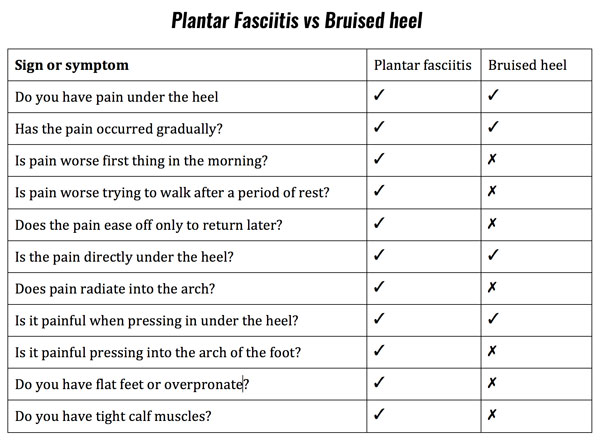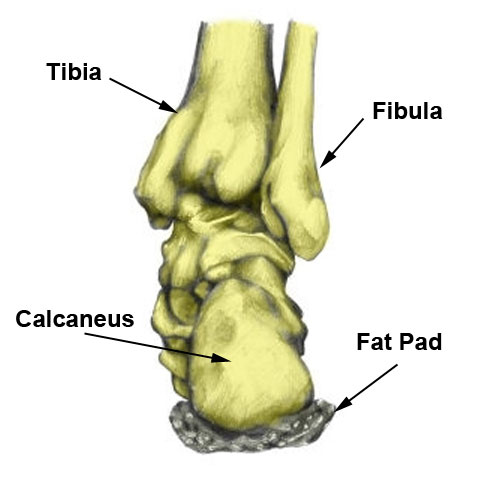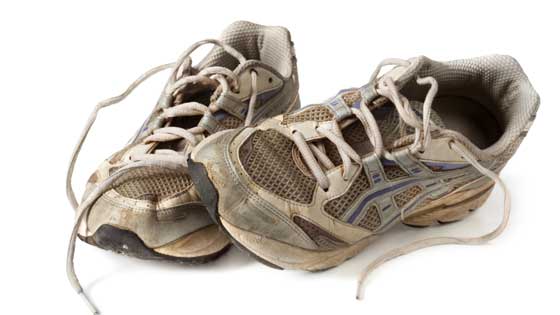How To Help A Bruised Heel
A bruised heel is also known as a fatty pad contusion or a Policeman's Heel. It is a mutual cause of hurting under the heel. Hither nosotros explain the symptoms, causes and handling of a bruised heel.
Medically reviewed by Dr Chaminda Goonetilleke, 4th Jan. 2022
Hobbling heel symptoms

Symptoms of a bruised heel consist of:
- Pain under the heel bone (Calcaneus).
- Symptoms usually come on gradually over time but can exist brought on instantly from landing badly on your heels.
- You will find walking or running will be uncomfortable or painful. However, running on your toes or the balls of your feet volition not be painful.
- Pressing in under the heel may trigger pain or be uncomfortable.
Walking or running will make your symptoms worse, whilst complete rest from aggravating activities reduces pain. Often athletes volition put upward with mild symptoms for some time before hurting prevents them from training.
Injuries with similar symptoms:
When diagnosing a bruised heel it is of import to consider other injuries which have similar symptoms.
- Plantar fasciitis – is one of the most common causes of hurting under the heel and into the arch of the foot.
- Calcaneal stress fracture – a hairline fracture of the heel bone caused by overuse.
Is information technology Bruised heel or Plantar fasciitis?
Hobbling heel symptoms are similar to those of plantar fasciitis. Nevertheless, the master differences are:
- A bruised heel is non usually worse first thing in the morning, Plantar fasciitis is.
- Pain is unlikely to radiate forwards into the arch of the foot, unlike plantar fasciitis.
- A hobbling heel often improves with short-term residual and gets gradually worse with walking.
- Just plantar fasciitis is often worse after rest/overnight and improves with walking.

What is a hobbling heel?
A bruised heel is a contusion of the tissues and os under the heel.
Anatomy

The heel bone, (calcaneus) is protected by a pad of fatty tissue. This is equanimous of an rubberband fibrous tissue septa (Latin for something that encloses) separating closely packed fat cells.
The fat pad acts as a shock absorber for the heel protecting the calcaneus or heel os.
Repetitive bear on to your heel causes the fat pad to flatten and exist displaced sideways. As a upshot, this leaves a thinner protective layer, resulting in bruising to the heel bone.
Causes
A bruised heel is usually caused by overuse. In item, with activities such every bit repetitive jumping, long-distance running, walking, or landing heavily on your heels.
Although overuse is primarily the cause, there are a number of factors that may contribute:
Poor footwear

If you wear hard, flat shoes with little or no cushioning, this increases the risk of overuse injuries. Make sure you have appropriate footwear which is in good condition.
Virtually running shoes are good for 400 miles before the midsole begins to lose its cushioning.
Training errors
Running likewise far as well soon. Increase your running mileage past no more than 10% per week.
If you switch running surfaces or change your footwear and so you may need to accommodate/reduce your training until yous adjust.
Bruised heel handling
If y'all take hold of a bruised heel early on then it should recover quite quickly, unremarkably within a few days.
Nevertheless, if you lot ignore the early signs of pain and then information technology can exist very hard to treat. This is due to the fat pad becoming damaged beyond easy repair.
Rest
Rest until you accept no pain. This is the most of import because continuing to walk or run volition not allow your pes to heal. Residual means complete remainder.
Switch to cycling, swimming, or whatever non-weight-begetting activity. There is no indicate stopping running for a week if you put up scaffolding for a living.
If y'all have to be on your anxiety, so utilize gel heel pads, insoles and/or record your heel.
Insoles & heel pads
Wearable a shock-absorbing/cushioning heel pad or insole in your shoes. This is peculiarly important if you take to wear difficult, flat, 'sensible' shoes to work.
Put insoles or heel pads in both shoes to avoid leg length differences considering this leads to further injury to the hips and lower dorsum.
Taping for Policeman'southward heel
Tape your heel. A uncomplicated heel taping technique will compress the fat pad and provide increased cushioning and protection.
Footwear
Wearable soft trainers with lots of cushioning in the midsole. They may not look good in the function merely will make a big difference to your healing time.
Replace running shoes if they are former. Most are only adept for 500 miles or vi months of use.
- Read more about choosing running shoes.
Prevention is always the best cure and then acting early with a fat pad contusion and resting is well-nigh of import.
Professional person Handling
A sports injury professional volition ostend the diagnosis and help identify any possible causes.
For instance, if you have biomechanical problems such as overpronation or oversupination. Your therapist may do a gait analysis to assess how the foot moves during walking and running.
They volition advise on insoles, orthotics, or heel pads to protect the fat pad in the heel.
However, for a bruised heel, gait is not normally a contributing factor.
References
- Spears IR, Miller-Young JE, Sharma J, et al. The potential influence of the heel counter on internal stress during static standing: a combined finite chemical element and positional MRI investigation. J Biomech 2007;40(12):2774–80.
Source: https://www.sportsinjuryclinic.net/sport-injuries/foot/heel-pain/bruised-heel

0 Response to "How To Help A Bruised Heel"
Post a Comment